I have seen this question Replace value in XML using SQL and again I am thankful, however, I have a XML file with all the trigger creation scripts but I have not been able to execute it because of the GO.
Partial view of my XML file:
<Krishna>IF 'MY_SERVER' <> @@ServerName THROW 50001, 'Wrong Server!!!',1 </Krishna>
<Krishna>GO</Krishna>
<Krishna>use [DB_02]</Krishna>
<Krishna>GO</Krishna>
<Krishna>IF EXISTS (SELECT 'Radhe' FROM sys.triggers t wHERE t.[name] = 'tgr_repl_AuPair_Insert' AND CASE WHEN t.parent_id = 0 THEN t.parent_id ELSE object_id('[sub].[repl_Aupair]') END = t.parent_id )
</Krishna>
<Krishna>EXEC('BEGIN DROP TRIGGER [sub].[tgr_repl_AuPair_Insert] END') </Krishna>
<Krishna>GO</Krishna>
<Krishna></Krishna>
<Krishna>CREATE TRIGGER [sub].[tgr_repl_AuPair_Insert]</Krishna>
<Krishna>ON [sub].[repl_Aupair]</Krishna>
<Krishna>FOR INSERT, UPDATE</Krishna>
when I try to get rid of the GO, replacing it like it is suggested here, I get a different error.
DECLARE @XML3 XML
SELECT @XML3 = (SELECT a.trigger_definition AS Krishna FROM TableBackups.dbo._MMiorelli_20220615_triggerdropping_203144_2 a FOR XML PATH(''))
WHILE @xml3.exist(N'//*[text()="GO"]')=1
BEGIN
SET @xml3.modify(N'replace value of (//*[text()="GO"]/text())[1] with ""');
END
exec sp_execXML @dbname=N'APCore'
,@XML=@xml3
,@DEBUG=1
,@PrintOnly=0
this is the way I am executing the commands that are within my XML:
declare @i int = 1
select @sql1 = ''
SELECT @SQL2 = 'Radhe'
WHILE @sql2 is not null
begin
SELECT @sql2 = @XML.value('(/Krishna/text())[sql:variable("@i") cast as xs:int?][1]', 'varchar(max)')
if @DEBUG=1
PRINT COALESCE(@sql2,'@SQL2 WAS NULL' + ' -- @I IS ' + CAST(@I AS VARCHAR(5)))
if @sql2 is not null
begin
SET @sql1 = CAST (@sql1 + @sql2 + @vbCrLf AS NVARCHAR(MAX))
IF @PrintOnly = 1
BEGIN
EXEC sp_DisplayNVarchar @textToDisplay = @SQL2, @debug =0
END
ELSE
BEGIN
EXEC (@SQL2)
END
end
SELECT @i = @i + 1
if @i >= @Limit
SET @sql2 = null
end
BASICALLY:
each line of the XML is a command
SELECT @sql2 = @XML.value('(/Krishna/text())[sql:variable("@i") cast as xs:int?][1]', 'varchar(max)')
My question is:
How could I replace the every GO inside my long script into a new line in my XML?
Every time I meet a GO, that GO is removed but from that place on is a new line in my XML.
this is an example of code and XML that works:
here is the code:
---------------------------------------
----check the data
---------------------------------------
GO
SELECT [@@TRANCOUNT]=@@TRANCOUNT
TRUNCATE TABLE #the_inserts
TRUNCATE TABLE #VICASA477
INSERT INTO #the_inserts(RADHE1)
SELECT RADHE1='use apcore;' + CHAR(10)+CHAR(13) + 'exec sp_count ' + '''' + E.AP_NAME2 + ''''
FROM #E E
DECLARE @XML3 XML
SELECT @XML3 = (SELECT #the_inserts.radhe1 AS Krishna FROM #the_inserts FOR XML PATH(''))
INSERT INTO #VICASA477
EXEC sp_execXML @dbname=N'APCore'
,@XML=@xml3
,@DEBUG=0
,@PrintOnly=0
select @XML3
SELECT * FROM #vicasa477
GO
Here is the XML: (partial view but you get the idea)
<Krishna>use apcore;
exec sp_count '[sub].[matchAgreementEmailSent]'</Krishna>
<Krishna>use apcore;
exec sp_count '[sub].[receivedLog]'</Krishna>
<Krishna>use apcore;
exec sp_count '[sub].[repl_Airline]'</Krishna>
<Krishna>use apcore;
exec sp_count '[sub].[repl_Airport]'</Krishna>
<Krishna>use apcore;
exec sp_count '[sub].[repl_ArrivalCalendar]'</Krishna>
<Krishna>use apcore;
exec sp_count '[sub].[repl_Aupair]'</Krishna>
<Krishna>
and here the results: (partial view but you get the idea)

